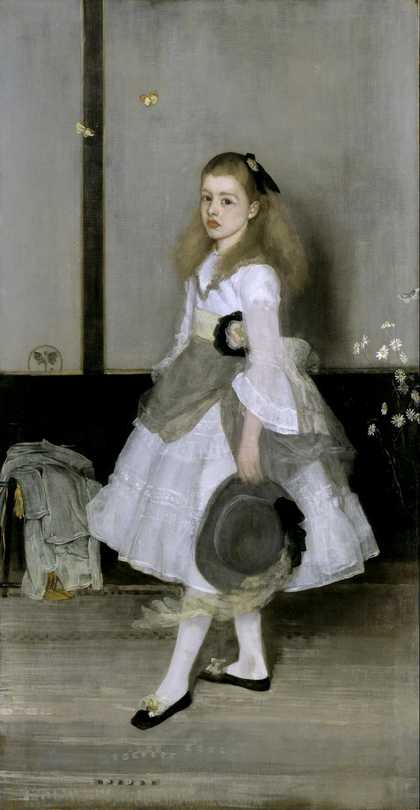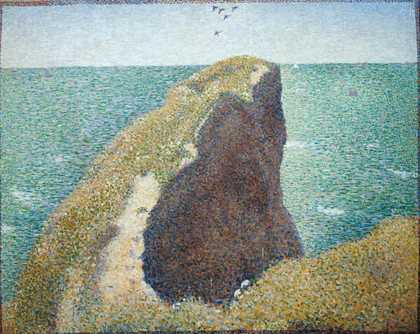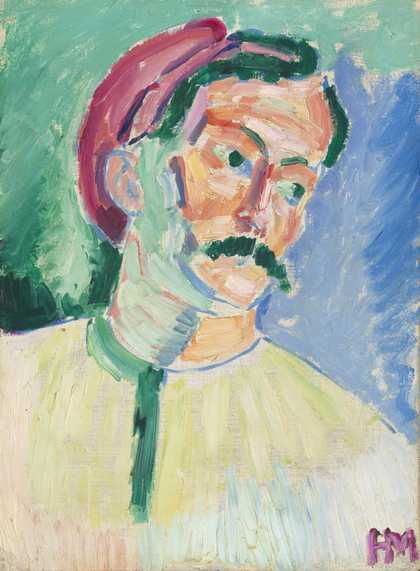
James McNeill Whistler
Harmony in Grey and Green: Miss Cicely Alexander (1872–4)
Tate

Georges Seurat
Le Bec du Hoc, Grandcamp (1885)
Tate

Henri Matisse
André Derain (1905)
Tate
In painting, tone refers to the relative lightness or darkness of a colour (see also chiaroscuro). One colour can have an almost infinite number of different tones. Tone can also mean the colour itself. For example, when Vincent van Gogh writes ‘I exaggerate the fairness of the hair, I even get to orange tones, chromes and pale citron-yellow’, he is referring to those colours at a particular tonal value. In his famous theory of painting, the French painter Georges Seurat describes how colour (teinte) and tone (ton) can be used to create particular emotional effects: ‘Gaiety is obtained through the use of dominant luminosity in tone; of prevailing warmth in colour.’
The term seems to have come into widespread use with the rise of painting directly from nature in the nineteenth century, when artists became interested in identifying and reproducing the full range of tones to be found in a particular subject. This in turn led to an interest in colour for its own sake and in colour theory.
However, tone is also a musical term and its use in relation to painting reflects the theory that painting can be like music, which became increasingly important from about 1870. From about that time the painter J.A.M. Whistler, for example, made paintings using a very limited range of closely related tones of just one or two colours, and gave them musical titles. This kind of painting is known as tonal painting. In 1908, in his A Painter’s Notes, Henri Matisse wrote: ‘When I have found the relationship of all the tones the result must be a living harmony of all the tones, a harmony not unlike that of a musical composition’.
